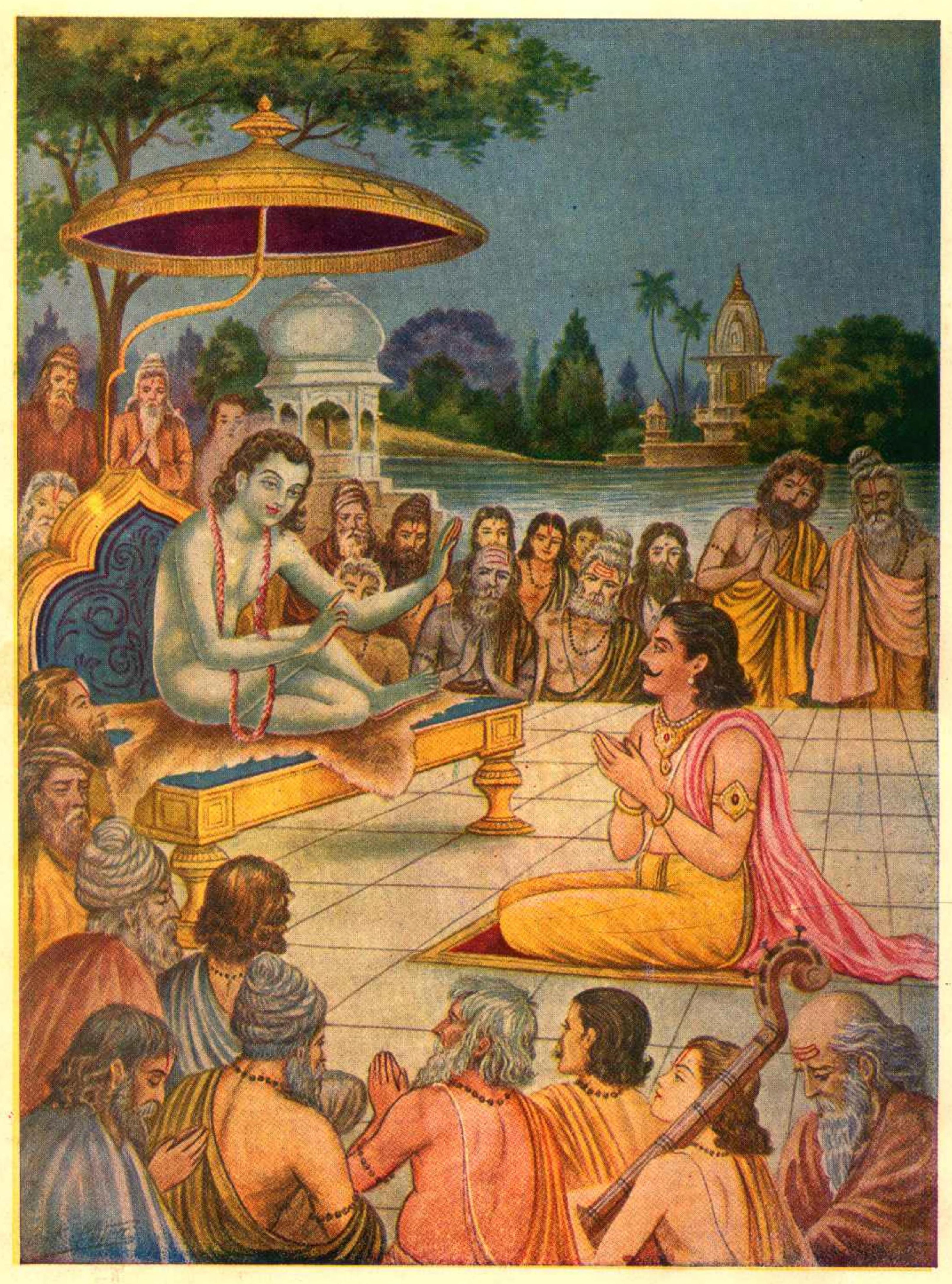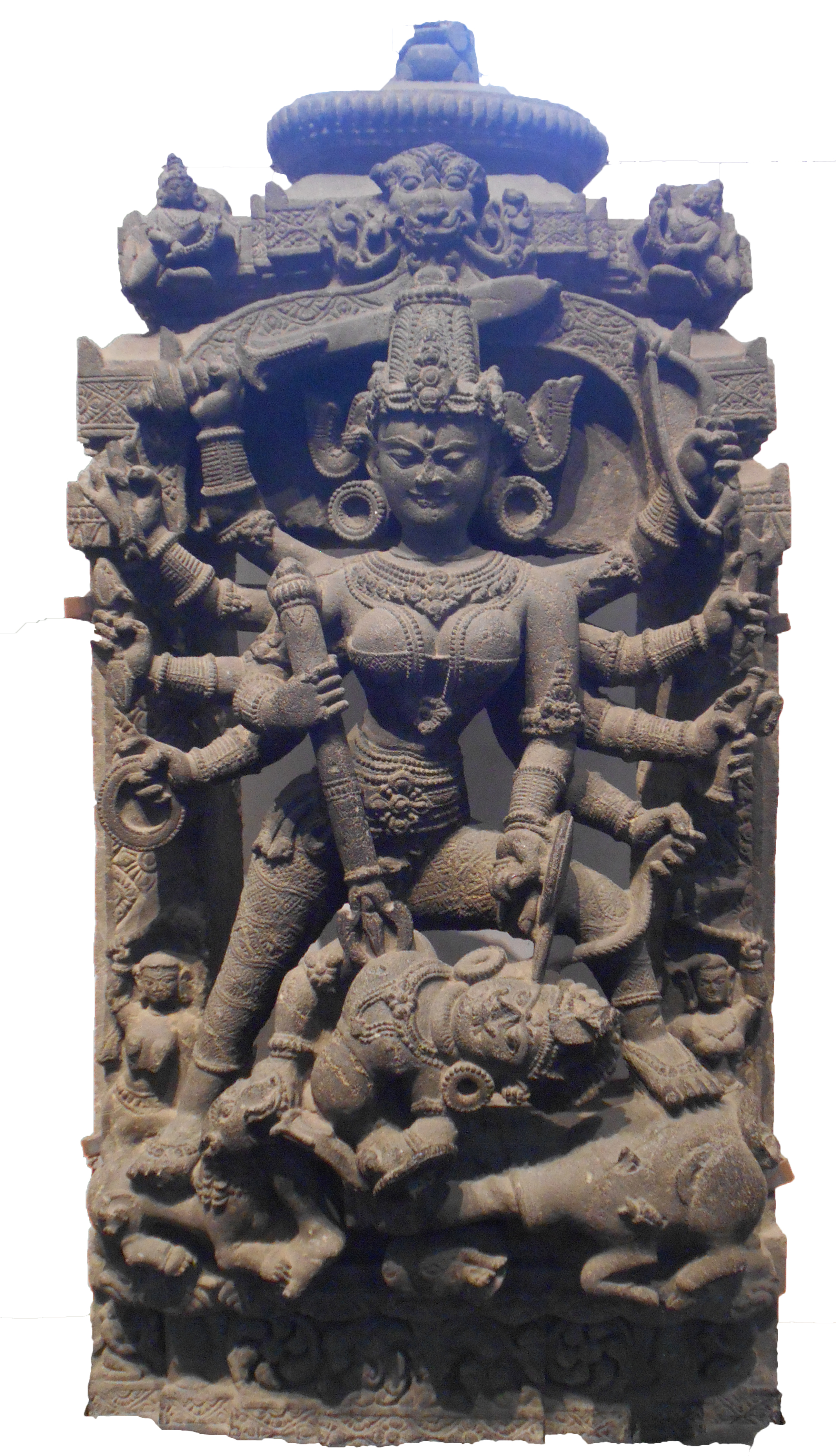|
Śuka
Shuka ( , also Shukadeva ) is a rishi (sage) in Hinduism. He is the son of the sage Vyasa and the main narrator of the scripture ''Bhagavata Purana''. Most of the ''Bhagavata Purana'' consists of Shuka reciting the story to the king Parikshit in his final days. Shuka is depicted as a sannyasi, renouncing the world in pursuit of moksha (liberation), which most narratives assert that he achieved. Legends Birth According to the Hindu epic ''Mahabharata'', after one hundred years of austerity by Vyasa, Shuka was churned out of a stick of fire, born with ascetic power and with the Vedas dwelling inside him, just like his father. As per ''Skanda Purana'', Vyasa had a wife, Vatik─ü (also known by the name Pinjal─ü), daughter of a sage named J─üb─üli. Their union produced a son, who repeated everything what he heard, thus receiving the name Shuka (lit. Parrot).Skanda Pur─üß╣ća, N─ügara Khanda, ch. 147 Other texts including the ''Devi Bhagavata Purana'' also narrate the birth of Shuka ... [...More Info...] [...Related Items...] OR: [Wikipedia] [Google] [Baidu] |
Bhagavata Purana
The ''Bhagavata Purana'' (; ), also known as the ''Srimad Bhagavatam (Śrīmad Bhāgavatam)'', ''Srimad Bhagavata Mahapurana'' () or simply ''Bhagavata (Bhāgavata)'', is one of Hinduism's eighteen major Puranas (''Mahapuranas'') and one of the most popular in Vaishnavism. Composed in Sanskrit and traditionally attributed to Veda Vyasa, it promotes '' bhakti'' (devotion) towards Krishna, an avatar of Vishnu, integrating themes from the Advaita (monism) philosophy of Adi Shankara, the Vishishtadvaita (qualified monism) of Ramanujacharya and the Dvaita (dualism) of Madhvacharya. It is widely available in almost all Indian languages. The ''Bhagavata Purana'', like other puranas, discusses a wide range of topics including cosmology, astronomy, genealogy, geography, legend, music, dance, yoga and culture. As it begins, the forces of evil have won a war between the benevolent '' devas'' (deities) and evil '' asuras'' (demons) and now rule the universe. Truth re-emerges as ... [...More Info...] [...Related Items...] OR: [Wikipedia] [Google] [Baidu] |
Celibate
Celibacy (from Latin ''caelibatus'') is the state of voluntarily being unmarried, sexually abstinent, or both. It is often in association with the role of a religious official or devotee. In its narrow sense, the term ''celibacy'' is applied only to those for whom the unmarried state is the result of a sacred vow, act of renunciation, or religious conviction. In a wider sense, it is commonly understood to only mean abstinence from Human sexual activity, sexual activity. Celibacy has existed in one form or another throughout history, in virtually all the major religions of the world, and views on it have varied. Classical Hindu culture encouraged asceticism and celibacy in the later stages of life, after one has met one's societal obligations. Jainism, on the other hand, preached complete celibacy even for young monks and considered celibacy to be an essential behavior to attain Moksha (Jainism), moksha. Buddhism is similar to Jainism in this respect. There were, however, signifi ... [...More Info...] [...Related Items...] OR: [Wikipedia] [Google] [Baidu] |
Devi Bhagavata Purana
The Devi Bhagavata Purana (, '), also known as the Devi Purana or simply Devi Bhagavatam, is one of the eighteen Mahapurana (Hinduism), Mahapuranas as per Shiva Purana of Hinduism. Composed in Sanskrit language, Sanskrit by Vyasa, Veda Vyasa, the text is considered a major purana for Devi worshippers (Shaktism, Shaktas). It promotes ''bhakti'' (devotion) towards Mahadevi, integrating themes from the Shaktadvaitavada tradition (a syncretism of Samkhya and Advaita Vedanta). While this is generally regarded as a Shakta Purana, some scholars such as Dowson have also interpreted this Purana as a Shaivism, Shaiva Purana. The Purana consists of twelve cantos with 318 chapters. Along with the ''Devi Mahatmya'', it is one of the most important works in Shaktism, a tradition within Hinduism that reveres Devi or Shakti (Goddess) as the primordial creator of the universe, and as Brahman (ultimate truth and reality). It celebrates the divine feminine as the origin of all existence: as th ... [...More Info...] [...Related Items...] OR: [Wikipedia] [Google] [Baidu] |
Ashrama (stage)
Ashrama may refer to: * Ashram (''─ü┼ørama''), a spiritual hermitage or a monastery in Indian religions * Ashrama (stage) (''─ü┼ørama''), in Hinduism is one of four age-based life stages discussed in ancient and medieval era Indian texts. * Ashrama, California, an unincorporated community in Santa Clara County See also * Ashram (other) {{disambiguation ... [...More Info...] [...Related Items...] OR: [Wikipedia] [Google] [Baidu] |
Brihaspati
Brihaspati (, ), is a Hindu god. In the ancient Vedic scriptures, Brihaspati is associated with fire, and the word also refers to a god who counsels the devas and devis (gods and goddesses). In some later texts, the word refers to the largest planet of the Solar System, Jupiter, and the deity is associated with the planet as a Navagraha. Sage Brihaspati appears in the Rigveda (pre-1000 BCE), such as in the dedications to him in the hymn 50 of Book 4; he is described as a sage born from the first great light, the one who drove away darkness, is bright and pure, and carries a special bow whose string is '' Rta'' or "cosmic order" (basis of dharma). His knowledge and character is revered, and he is considered Guru (teacher) by all the Devas. In the Vedic literature and other ancient texts, sage Brihaspati is also called by other names such as Bramanaspati, Purohita, Angirasa (son of Angiras) and Vyasa; he is sometimes identified with god Agni (fire). His wife is Tara (or g ... [...More Info...] [...Related Items...] OR: [Wikipedia] [Google] [Baidu] |
Guru
Guru ( ; International Alphabet of Sanskrit Transliteration, IAST: ''guru'') is a Sanskrit term for a "mentor, guide, expert, or master" of certain knowledge or field. In pan-Indian religions, Indian traditions, a guru is more than a teacher: traditionally, the guru is a reverential figure to the disciple (or ''wikt:ÓżČÓż┐ÓżĘÓźŹÓż», shisya'' in Sanskrit, literally ''seeker [of knowledge or truth'']) or student, with the guru serving as a "counsellor, who helps mould values, shares experiential knowledge as much as Knowledge#Hinduism, literal knowledge, an Role model, exemplar in life, an inspirational source and who helps in the spiritual evolution of a student". Whatever language it is written in, Judith Simmer-Brown says that a tantra, tantric spiritual text is often codified in an obscure twilight language so that it cannot be understood by anyone without the verbal explanation of a qualified teacher, the guru. A guru is also one's spiritual guide, who helps one to discover the ... [...More Info...] [...Related Items...] OR: [Wikipedia] [Google] [Baidu] |
Jivanmukta
A ''jivan mukta'' or ''mukta'' is someone who, in the Advaita Vedanta philosophy of Hinduism, has gained and assimilated self-knowledge, thus is liberated with an inner sense of freedom while living. The state is the aim of moksha in Advaita Vedanta, Yoga and other schools of Hinduism, and it is referred to as ''jivanmukti'' (Self-realization).Gerhard Oberhammer (1994), La D├®livrance d├©s cette vie: Jivanmukti, Coll├©ge de France, Publications de l'Institut de Civilisation Indienne. S├®rie in-8┬░, Fasc. 61, ├ēdition-Diffusion de Boccard (Paris), , pages 1-9 Jivanmukti contrasts with the concept of '' videhamukti''; the latter means "liberation or emancipation after death, in afterlife". Etymology ''J─½vanmukta'' () is an adjective derived from a combination of Sanskrit noun Óż£ÓźĆÓżĄ '' j─½va'', "life", and the past participle of the verb Óż«ÓźüÓżÜÓźŹ (much, or IAST muc), "to liberate". Monier-Williams gives the meaning "emancipated while still alive". ''J─½vanmukti'' (), the ... [...More Info...] [...Related Items...] OR: [Wikipedia] [Google] [Baidu] |
Janaka
Janaka (, IAST: ''Janaka'') is the King of Videha who ruled from Mithila (region), Mithila, in the Hindu epic ''Ramayana''. Janaka was married to Sunayana (Ramayana), Sunayana. He is the father of Sita and Urmila in the epic. The term Janaka was also the title adopted by all the kings of Videha, who were the descendants of the Nimi (king), King Nimi and his son King Mithi. The King Mithi is considered as the first King of Videha who was titled with the term ''Janaka''. Janaka is revered as being an ideal example of non-attachment to material possessions. He was intensely interested in spiritual discourse and considered himself free from worldly illusions. His interactions with sages and seekers such as Ashtavakra and Sulabha are recorded in the ancient texts. Legend Birth and ancestry Janaka, originally named S─½radhvaja, was born to King Hrasvaroman of Mithila and his wife Keikasi. The Videha kingdom was situated historically between the Gandaki River to the east ... [...More Info...] [...Related Items...] OR: [Wikipedia] [Google] [Baidu] |
Krishna
Krishna (; Sanskrit language, Sanskrit: ÓżĢÓźāÓżĘÓźŹÓżŻ, ) is a major deity in Hinduism. He is worshipped as the eighth avatar of Vishnu and also as the Supreme God (Hinduism), Supreme God in his own right. He is the god of protection, compassion, tenderness, and love; and is widely revered among Hindu divinities. Krishna's birthday is celebrated every year by Hindus on Krishna Janmashtami according to the lunisolar calendar, lunisolar Hindu calendar, which falls in late August or early September of the Gregorian calendar. The anecdotes and narratives of Krishna's life are generally titled as ''Krishna L─½l─ü''. He is a central figure in the ''Mahabharata'', the ''Bhagavata Purana'', the ''Brahma Vaivarta Purana,'' and the ''Bhagavad Gita'', and is mentioned in many Hindu philosophy, Hindu philosophical, Hindu theology, theological, and Hindu mythology, mythological texts. They portray him in various perspectives: as a god-child, a prankster, a model lover, a divine hero, ... [...More Info...] [...Related Items...] OR: [Wikipedia] [Google] [Baidu] |
Vishnu
Vishnu (; , , ), also known as Narayana and Hari, is one of the Hindu deities, principal deities of Hinduism. He is the supreme being within Vaishnavism, one of the major traditions within contemporary Hinduism, and the god of preservation (sattva). Vishnu is known as ''The Preserver'' within the Trimurti, the triple deity of Para Brahman, supreme divinity that includes Brahma and Shiva.Gavin Flood, An Introduction to Hinduism' () (1996), p. 17. In Vaishnavism, Vishnu is the supreme Lord who creates, protects, and transforms the Hindu cosmology, universe. Tridevi is stated to be the energy and creative power (Shakti) of each, with Lakshmi being the equal complementary partner of Vishnu. He is one of the five equivalent deities in Panchayatana puja of the Smarta tradition of Hinduism. According to Vaishnavism, the supreme being is with qualities (Saguna Brahman, Saguna), and has definite form, but is limitless, transcendent and unchanging absolute Brahman, and the primal Atma ... [...More Info...] [...Related Items...] OR: [Wikipedia] [Google] [Baidu] |
Attachment Theory
Attachment theory is a psychological and evolutionary framework, concerning the relationships between humans, particularly the importance of early bonds between infants and their primary caregivers. Developed by psychiatrist and psychoanalyst John Bowlby (1907ŌĆō90), the theory posits that infants need to form a close relationship with at least one primary caregiver to ensure their survival, and to develop healthy social and emotional functioning. Pivotal aspects of attachment theory include the observation that infants seek proximity to attachment figures, especially during stressful situations. Secure attachments are formed when caregivers are sensitive and responsive in social interactions, and consistently present, particularly between the ages of six months and two years. As children grow, they use these attachment figures as a secure base from which to explore the world and return to for comfort. The interactions with caregivers form patterns of attachment, which in t ... [...More Info...] [...Related Items...] OR: [Wikipedia] [Google] [Baidu] |







